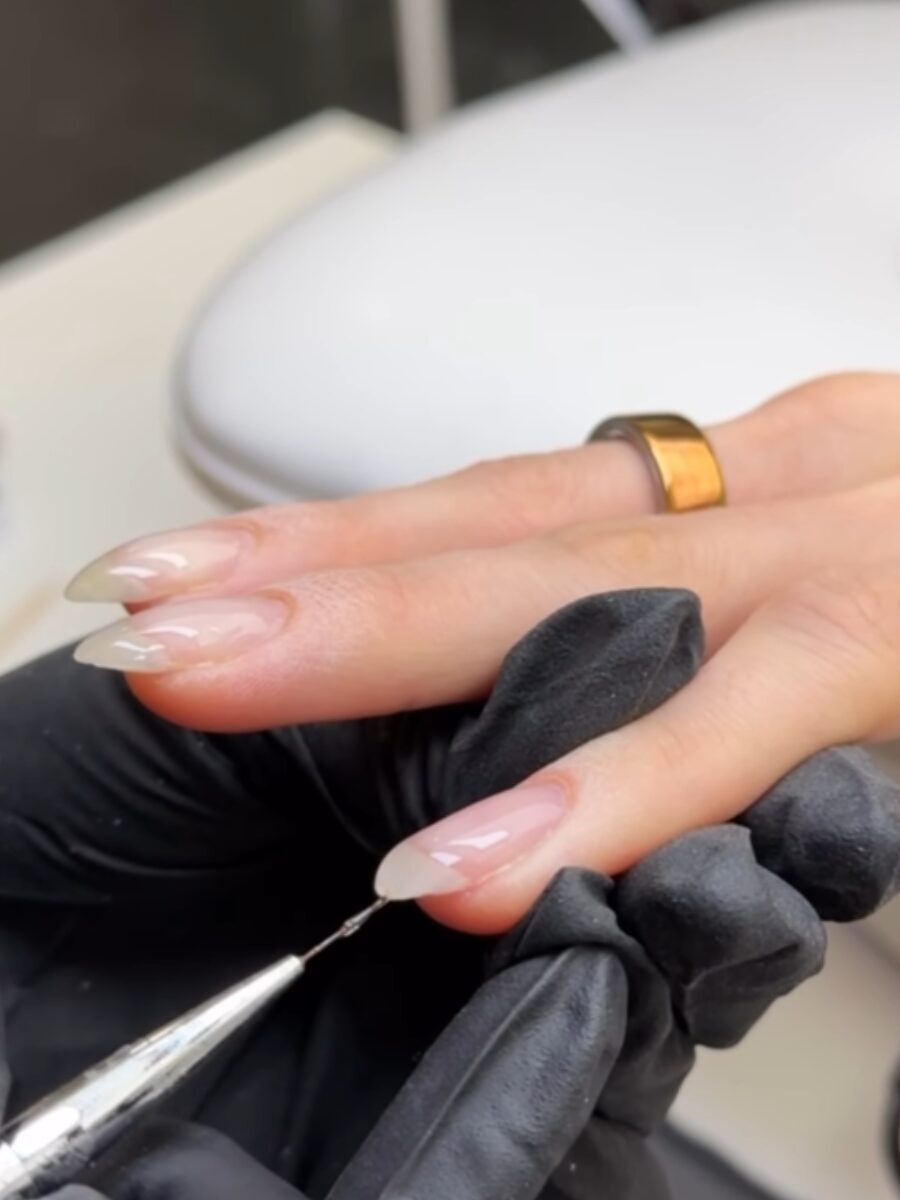
Potted gel polish is having its moment — and for good reason.
At Art Nail NYC, we’ve long preferred this approach for our detailed, health-focused manicures. Our artists work exclusively with the highest-quality Japanese gels — brands like Kokoist, Vetro, and Leafgel — to achieve precise application, ultra-smooth finishes, and long-lasting wear that respects the natural nail.
If you’ve ever tried to paint a razor-thin French line or intricate art with bottled gel and ended up fighting gravity, you already know why the jar wins. Potted gel gives you control. It sits exactly where you place it — no flooding, no dripping, no compromises.
This guide breaks down what potted gel is, how it differs from bottled formulas, and why it’s become essential for anyone who values artistry, detail, and nail health.
What Exactly Is Potted Gel Polish?
Potted gel is a soft color gel packaged in a small jar, not a bottle.
Instead of a built-in brush, you use your own — a flat brush for coverage or a fine liner for detail — to pick up just the amount you need.
The difference is in the texture: potted gels are thicker and more pigment-rich than bottled versions, which means they stay exactly where you apply them. They’re ideal for fine line work, French details, color blocking, and custom mixing.
Let’s be clear — this isn’t builder or structure gel. You won’t use it to add length or thickness. Potted gel is designed for flawless color and definition, curing cleanly in thin, even layers.
You’d reach for a pot instead of a bottle when:
You want pigment that stays put for precision work
You’re mixing custom colors or finishes
You need sharp, clean coverage in a single thin coat
You prefer the flexibility of working off a palette
At Art Nail NYC, we call it the artist’s gel. Once you experience it, bottled formulas feel limiting.
When to Use It
Line work: precise, crisp lines without bleeding
French manicures: perfect smile lines and control at the cuticle
Color blocking: clean edges and even saturation
Custom blends: mix tones, transparencies, and shimmer finishes
Full coverage: smooth opacity in thin, breathable layers
Bottled gels are for speed.
Potted gels are for mastery.
How to Apply Potted Gel Polish
Prep + Base. Nail prep and base gel as usual. Cure fully.
Load from the pot. Pick up a small amount using your brush and palette.
Apply thin layers. Even coverage, no pressure, no pooling.
Cure properly:
30 seconds for light shades
60 seconds for deeper tones
Repeat as needed. Build opacity slowly.
Top coat and seal. Always finish to protect the design.
Pro Tip: If the surface wrinkles, it’s either too thick or under-cured. Keep it thin and consistent for a glass-smooth finish.
Chrome, Mixing, and Art
Potted gels perform beautifully under chrome powders and metallic accents.
Cure your color layer for 30–40 seconds, rub in your pigment, and seal with top coat.
They’re also perfect for artists who love to experiment — blending milky gradients, layering transparent shades, or creating custom tones that bottled gels just can’t match.
Tools That Make It Easier
Flat brush for coverage
Fine liner brush for detailed work
Clean mixing palette
Lint-free wipes
Professional LED/UV lamp
Our Studio Favorites
We use only premium Japanese brands — Kokoist, Vetro, and Leafgel — known for their superior pigmentation, flexible formulas, and low-odor, HEMA-free chemistry. These gels cure cleanly, self-level beautifully, and are formulated to protect natural nails while delivering editorial-level precision.
If you’ve ever admired the soft gloss or depth of color in our structured gel manicures, this is what you’re seeing — expertly applied potted gel from the world’s top systems.
The Bottom Line
Potted gel polish aren’t just a trend — they’re a technique.
They give artists and clients what bottled gels can’t: unmatched control, creative range, and refined results.
At Art Nail NYC—a natural nail care salon in NYC, we specialize in structured, health-focused gel manicures that combine expert technique with luxury formulation. Every jar, every brushstroke, and every finish is chosen intentionally — because nails deserve more than just polish.
